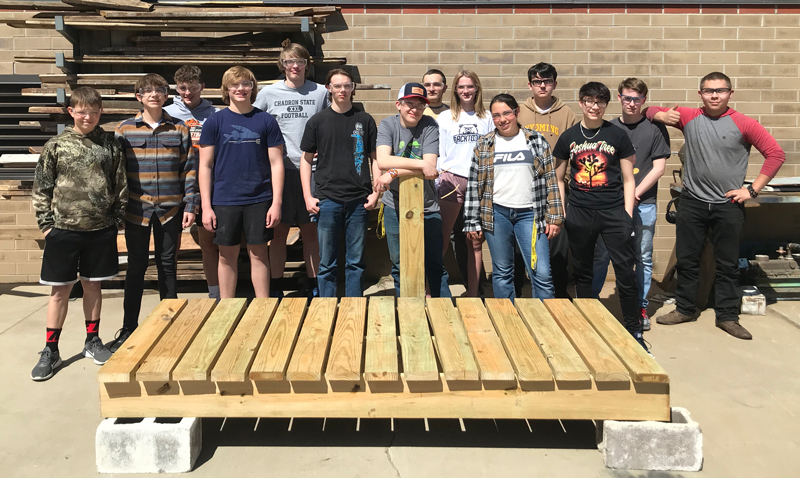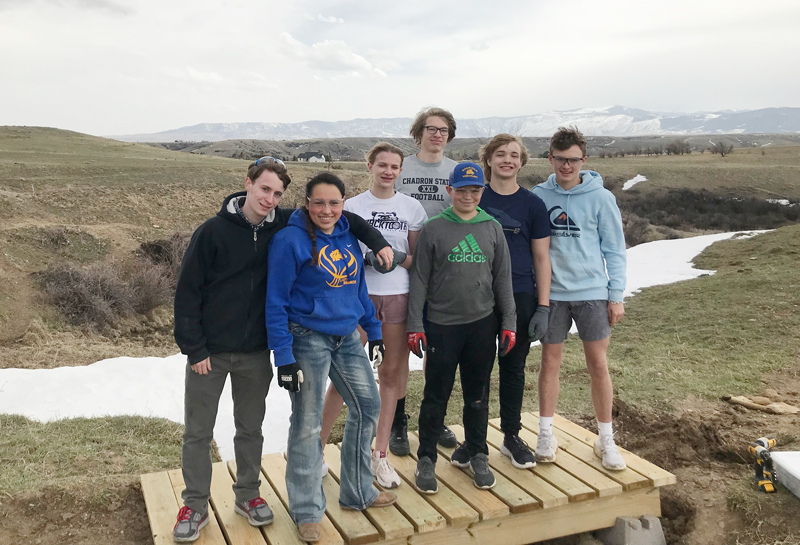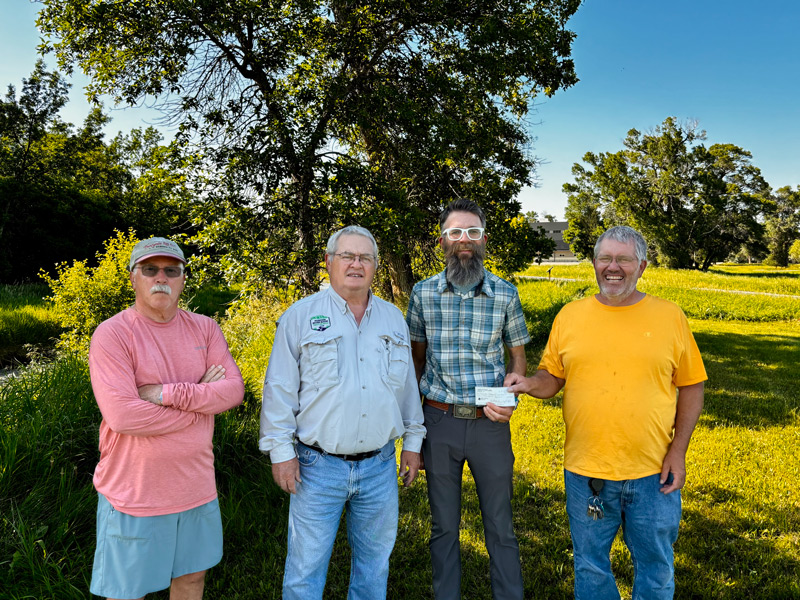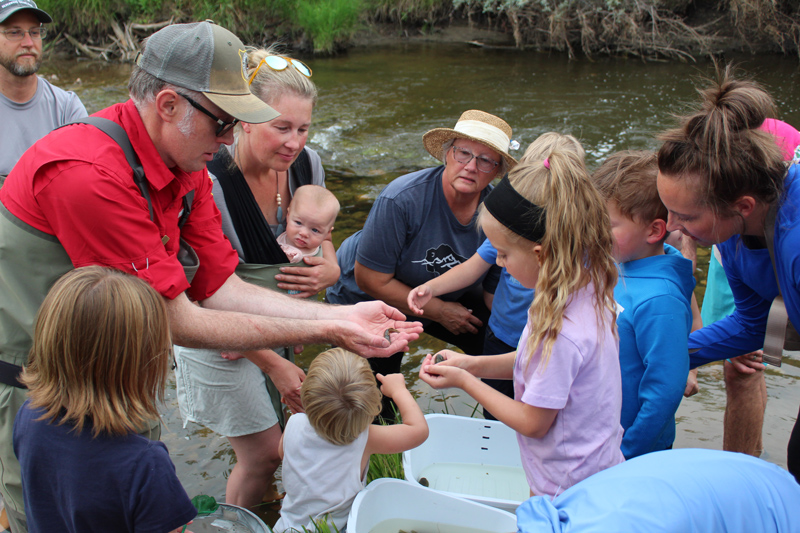The students of Sheridan High School’s Woods I program recently lent a helping hand that will allow people in the community have a hoot outdoors – a Hidden Hoot that is!
An important component of Career and Technical Education (CTE) courses like Woods I is teaching skills they will be able to utilize in careers long after they leave school. This spring, the students were able to put what they’ve learned into practice by designing, constructing, and installing a bridge that will allow people to safely cross a gully that had cut across Sheridan Community Land Trust’s Hidden Hoot Trail.
Paul Plourde, SHS Woods Instructor, said the students worked in teams, with each team taking on a portion of the bridge. To do so, the students cut boards to length, including the bridge rails, joists, slats, and worked cooperatively to make sure each component of the bridge fit, while applying woodworking skills in measurement, mathematics, and constructing projects from a design drawing.
From there, the student groups began mocking up the bridge, making sure the final bridge would fit and hold up to the weather, foot, and bike traffic on the trail for years to come. Student groups worked cooperatively to measure the fitment locations, install joist hangers, and fit each component of the bridge in pieces so it could be transported and assembled at the Hidden Hoot Trail.
While many of the students explained how they were able to sharpen their skills using miter saws, drills, and precision measurements, one student described how they learned a lesson that can only be learned in the field.
Ty Leach said he learned that it’s better to “have bigger holes than smaller holes (for bridge footings), because you can add more dirt.”
Colbe Horton summarized the group’s experience by observing “Teamwork and communication makes things go a lot faster.”
Things did go faster, as the students were able to help SCLT Trails Program Manager Will Dutcher get the bridge installed in a few hours.

Students from the Sheridan High School Woods I class with a bridge the class designed, built and installed at Hidden Hoot Trail. The students were tasked with working in teams to design and build the structure. Instructor Paul Plourde said the approach also necessitated the students working together as a team to accomplish a project – a skill that will serve them well going forward. Pictured (l-r): Austin Orum, Brayden Legerski, Ty Leach, Garrett Mangus, Harvey Fryberger, Luke Mraz, Camden Schroth, Colbe Horton, Kylan Sanders, Amara Caywood, Alex Miller, Maddie Peterson-Taylor, Dylan Babcock and Aristin Elder.
“It was great to see how these kids were able to see a project through from start to finish,” Dutcher remarked, adding that it was nice to work with a mix of students who were regular trail visitors and others who he was able to introduce to the trails.
“Several said they were looking forward to coming to the trail with their friends to show them how they helped improve the trails,” Dutcher concluded.
Plourde agreed, saying, “The students really enjoyed the project. It gave them an opportunity to work cooperatively to use their knowledge and develop solutions in a way that made something great and gave back to the community.”
That assessment rang true to Kylan Sanders, who frequents trails like Hidden Hoot to experience the beauty of their Bighorns backyard.
“I love seeing my surroundings and how the trail came together, knowing that hard work gave us the ability to hike on these trails,” Sanders said, adding that they were “grateful to be part of crafting one.”
“Just knowing the amount of footsteps and eyes…on our craftsmanship makes it so worthwhile,” Sanders concluded.










